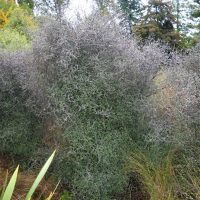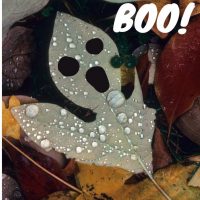The Weekly Dirt 11.17.21
11.17.21
Around The Farm
by Sophia Falls, UW Farm Student Staff/CSA Lead, majoring in Landscape Architecture, College of Built Environments
I have been working at the UW Farm since March of this year.
I first found this wonderful place freshman year through visiting a pizza bake and was drawn by the community surrounding the farm. I had never gardened much as a kid.
The Weekly Dirt 11.10.21
11.10.21
Around The Farm
We are happy to announce that Sarah Mayer has been selected by wǝɫǝbʔaltxʷ – Intellectual House as the new Food Sovereignty Liaison. Sarah spent the last few weeks getting oriented by attending the UW Farm to Table dinner and has already hosted her first work party in the Native Garden, which is located at the southeast side of the UW Farm, Center for Urban Horticulture.
Read moreSelected Plants from the Pacific Connections Garden-New Zealand Forest

1) Corokia cotoneaster Wire-netting Bush
The common name of this species of Corokia aptly describes its wiry branches and tangled growth form. Growing into a dense bush of 1-3 meters, it has small dark-green or bronze leaves.
A native of New Zealand, C. cotoneaster is found in dry and stony places throughout its homeland, and is extremely tolerant of dry and exposed conditions.
The Weekly Dirt 11.3.21
11.3.21
Around The Farm
by Russell Botulinski, UW Farm Intern/Organic Certification and Research Lead
I’m a senior studying ESRM: Restoration Ecology & Environmental Horticulture. My first introduction to the UW Farm was this Spring, when I enrolled in ENVIR 240, The Urban Farm class, taught by Dr. Eli Wheat.
I fell in love with the course and the farm, and became a TA for the summer session ENVIR 240 class, assisting Madison Bristol.
The Weekly Dirt 10.27.21
10.27.21
Around The Farm
It is nearly time to put the farm to bed by seeding the earth with a green quilt of clover, vetch, rye, peas and phacelia. Over-wintering crops will keep in the field, through rain, sleet, and snow. The scarlet and emerald kale and collards are tougher than any frost. Bunches will be plucked every week through the new year bound for the food pantry and UW Dining services.
Union Bay Watch: Footsteps

Due to the volume of daily visitors at the Union Bay Natural Area (UBNA) even footsteps need to be limited to the approved gravel trails.
Read moreThe Weekly Dirt 10.20.21
10.20.21
Around The Farm
UW Farm Receives Husky Green Legacy Award
Today, six months after the announcement, Husky Green Award honorees from 2021 and 2020 will celebrate in person at 3pm at the wǝɫǝbʔaltxʷ – Intellectual House.
The Husky Green Awards recognize individuals and groups across all University of Washington campuses who lead the way for sustainability at the University of Washington.
Selected Plants From the Garden of Dr. Wott

Although Dr. John A. Wott, retired Professor Emeritus, Urban Horticulture at the University of Washington and former Washington Park Arboretum Director, recently passed at the age of 82, his work and his plants continue on at the Arboretum. His garden was full of rare, unusual, and fascinating plants and these are a few of the plants that were donated to the Arboretum by Dr.
Read moreThe Weekly Dirt 10.13.21
10.13.21
Around The Farm
Farm to Table Dinner will introduce new UW Botanic Gardens Director
In two weeks, October 27th, the UW Farm will host its ever popular Farm to Table Dinner. The 7th annual event will introduce the new Director of the UW Botanic Gardens, Christina Owen. As is the tradition, the dinner will feature a menu crafted from produce grown at the campus farm.
October 2021 Plant Profile: Sassafras albidum

Happy October! As Halloween and spooky season approaches, the best way to celebrate is to visit the Washington Park Arboretum and check out our sassafras. These trees are quite festive as they display leaves shaped like little ghosts (or mittens depending on your viewing angle)! Leaves can have a different number of lobes ranging from 1-3 on the same plant.
This deciduous tree displays vivid colors of fall foliage in yellow, orange, red, and pink.